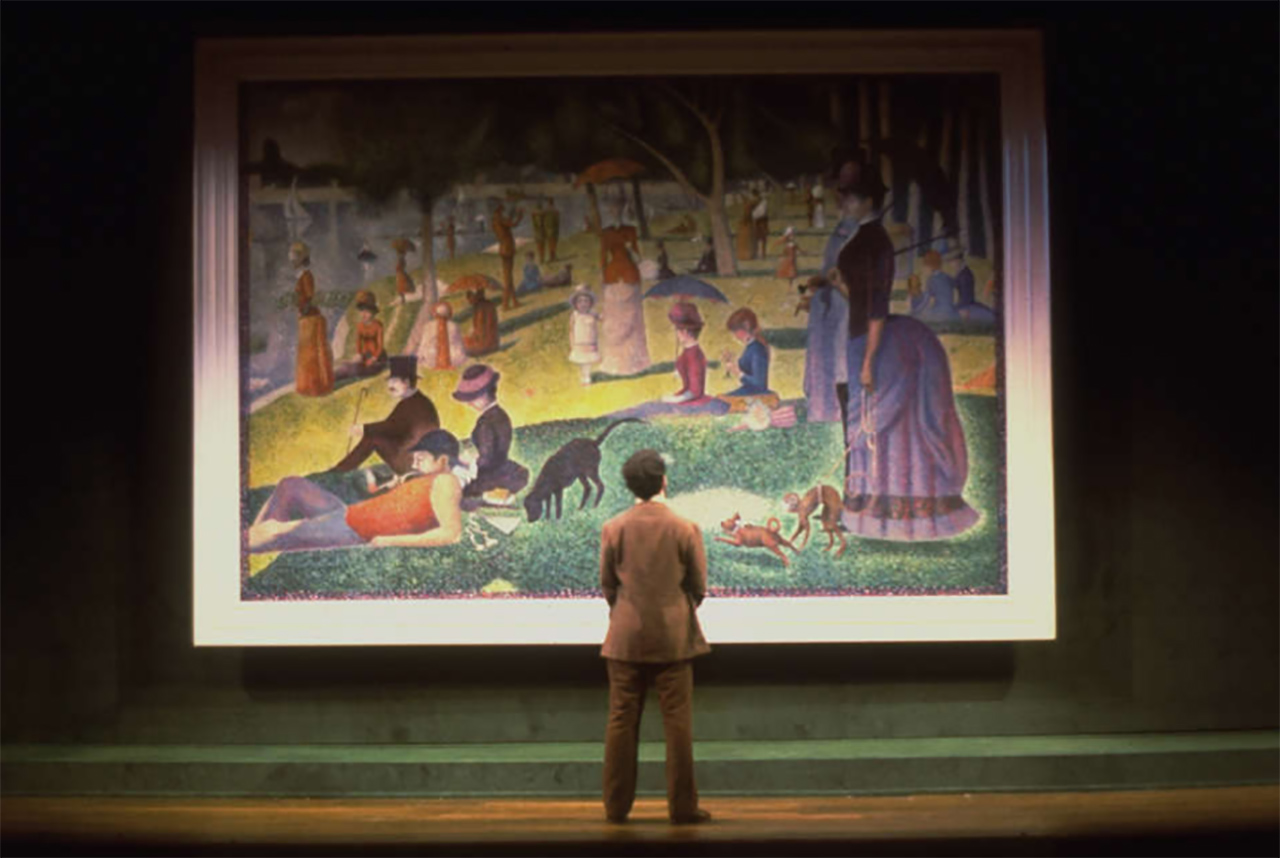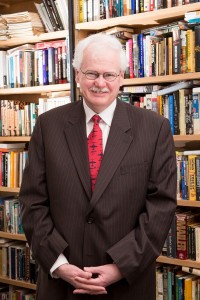Stephen Sondheim could be called the name in musical theatre. His prolific work as a lyricist and songwriter includes such musicals as West Side Story, Gypsy, A Funny Thing Happened on the Way to the Forum, Company, Follies, Assassins, Sunday in the Park with George, Into the Woods, and Sweeney Todd: The Demon Barber of Fleet Street.
Sondheim could also be called a postmodernist because his work flouts popular notions of musical theatre. That is the argument of Robert McLaughlin with his new book, Stephen Sondheim and the Reinvention of the American Musical. A postmodern literature scholar who also writes about World War II cinema and the American musical theatre, McLaughlin employed the same tools he uses when studying postmodern authors like Thomas Pynchon to analyze Sondheim’s famed lyrics and songs.
Generally associated with the arts and architecture, postmodern thinkers tend to scoff at the idea that all mankind is connected by any grand theme or message. The status quo is often rejected, with a special disdain reserved for society’s expectations.
That cultural rebellion of postmodernism can be found in Sondheim’s ever-evolving style, said McLaughlin. “Sondheim described his goal as having people go to the theatre, really enjoy themselves, and then go home and not be able to sleep.” McLaughlin paused and added, “That’s not why a lot of people go to see a musical. There’s a reason he’s never had a musical that runs 10,000 performances.”
If you think of Hamilton or Fun Home, these are musicals about very, very unusual topics,” he said. “Could this have happened before Sondheim? I don’t think it could. —Robert McLaughlin
Sondheim’s choice of subject matter also bucks the normal musical fare. “Murderous barbers or assassins aren’t usually the topics that scream at us ‘This should be a musical,’” said McLaughlin. He added that Sondheim’s boundary-pushing topics have influenced generations of musical writers. “If you think of Hamilton or Fun Home, these are musicals about very, very unusual topics,” he said. “Could this have happened before Sondheim? I don’t think it could.”
The way in which Sondheim purposely avoids unified, happy endings also calls to mind the postmodern view. As an example, McLaughlin contrasted Sondheim’s Sweeney Todd: The Demon Barber of Fleet Street with the classical musical Oklahoma! by Richard Rodgers and Oscar Hammerstein. “The classical musical is about communities—people who are forming the community and those who don’t fit in,” said McLaughlin. “In the end of a classic musical, people who don’t fit in have either been assimilated or expelled. In Oklahoma! the villain Jud has died. The heroes are wed, and the tension between the farmers and the cowmen ends in a cathartic song. Sondheim doesn’t allow for that moment of resolution or unity.”
 Instead, Sondheim’s characters tend to lose many battles. Lead characters die, are disillusioned, or wind up alone. “For postmodern artists, language isn’t something that unites us. It shows that all of our singular narratives and interpretations are different. Language mediates our very different experiences,” said McLaughlin. For a postmodern lyricist like Sondheim, even his song “No One Is Alone” from Into the Woods is less about unity, and more about responsibility. “While people assume ‘No One Is Alone’ is a grand statement about how we are all alike, what Sondheim means is to remind us that at times we can feel so isolated. So we have to remind ourselves that we have an impact on others. We are not alone, and what we do has consequences.”
Instead, Sondheim’s characters tend to lose many battles. Lead characters die, are disillusioned, or wind up alone. “For postmodern artists, language isn’t something that unites us. It shows that all of our singular narratives and interpretations are different. Language mediates our very different experiences,” said McLaughlin. For a postmodern lyricist like Sondheim, even his song “No One Is Alone” from Into the Woods is less about unity, and more about responsibility. “While people assume ‘No One Is Alone’ is a grand statement about how we are all alike, what Sondheim means is to remind us that at times we can feel so isolated. So we have to remind ourselves that we have an impact on others. We are not alone, and what we do has consequences.”
McLaughlin is among the first scholars to refer to Sondheim as a postmodern thinker. The postmodern idea of thumbing a proverbial nose at the status quo is not an attribute customarily bestowed upon musical theatre, especially comical, musical theatre, he noted. “Scholars see musicals as the kind of art that tells us what we already think about ourselves. And in many cases that is true,” McLaughlin said. In musical theatre, audiences often see characters fall in love, sing and dance their way over obstacles, and get married in three acts—all in a way society predicts. “Scholars tend to focus on anything that blows up the status quo, and that is why I think there has been a lot of scholarly disinterest in musical theatre.”
The book follows Sondheim’s career, from his early mentoring by Oscar Hammerstein (of Rodgers and Hammerstein fame), and his close work with director Harold Prince, to Sondheim’s work in not-for-profit venues. McLaughlin designed Stephen Sondheim and the Reinvention of the American Musical to examine each of Sondheim’s works in a way that is accessible for both scholars and musical theatre fans. “I think most fans think scholars throw their favorite plays into a machine that chews them up and spits out a long narrative, but I wrote this book to be fun as well as hold a scholarly weight,” said McLaughlin, who hopes the book will help scholars place Sondheim’s work in context. “If you look at the 1960s and 1970s, in all the other arts there is a postmodernist bent. So let’s look at what is happening in musical theatre, because these people are responding to the culture in similar ways.”
The idea of both scholars and fans finding something new in the book is important to McLaughlin, who is himself a Sondheim fan. He touts Sunday in the Park with George as a personal favorite, after he saw it on Broadway with Mandy Patinkin and Bernadette Peters in 1984. “I would say Follies is my favorite, but my wife is forever reminding me that she saw it on Broadway, and I did not,” he said with a smile.


